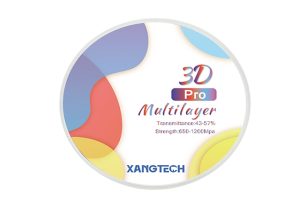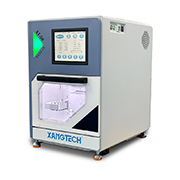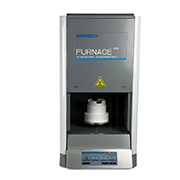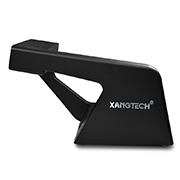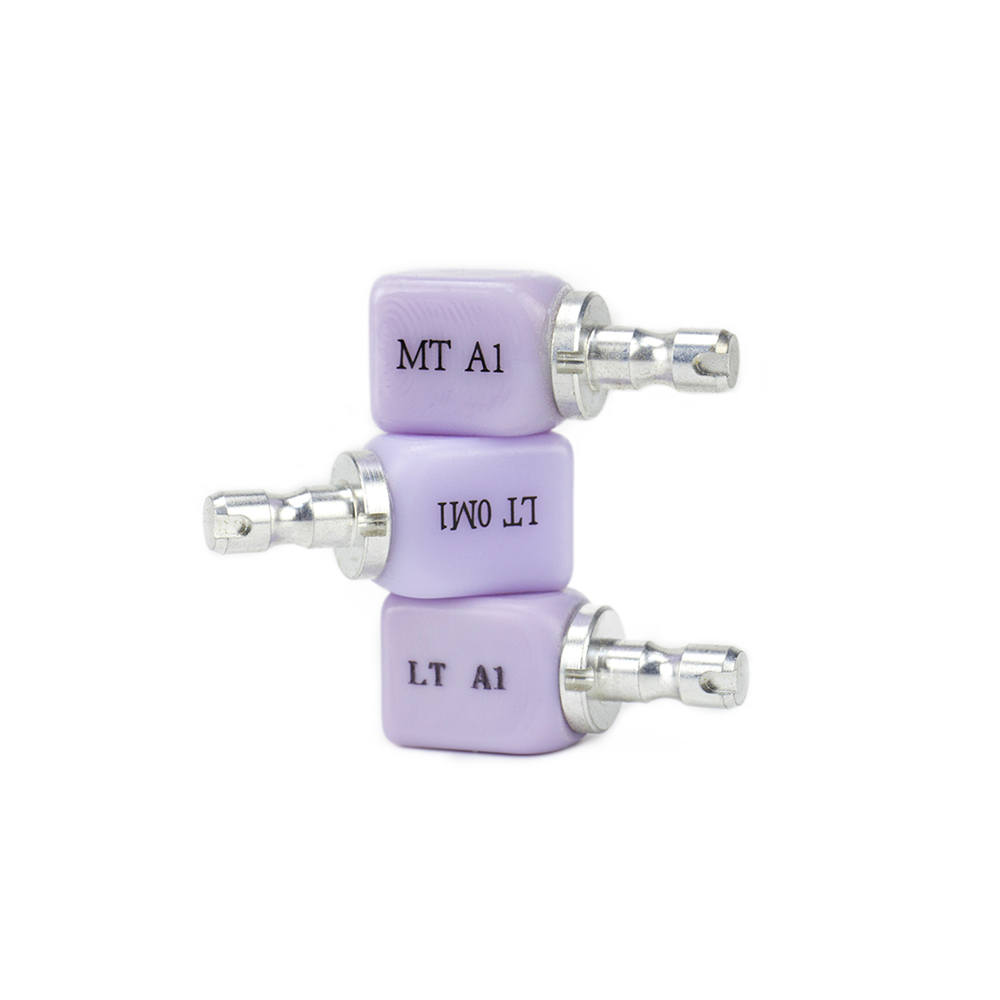Lithium disilicate has emerged as a preferred material for dental restorations, particularly due to its excellent aesthetic outcomes and mechanical properties. In the context of dental milling, it plays a significant role in delivering high-quality prosthetics that meet both functional and aesthetic demands. The integration of lithium disilicate blocks in milling procedures has transformed how dental professionals approach complex restorative cases, allowing for greater precision and superior results.
Understanding Lithium Disilicate in Dental Milling
Composition and Benefits of Lithium Disilicate
Lithium disilicate is a glass-ceramic material composed predominantly of lithium oxide and silicon dioxide. Its unique composition ensures a balance between strength and translucency, making it an ideal choice for esthetic applications in dentistry. The material is renowned for its excellent flexural strength, which typically exceeds 400 MPa, allowing for durable restorations that withstand significant masticatory forces. Additionally, lithium disilicate blocks offer a high degree of translucency, which closely mimics natural tooth enamel, thereby enabling more lifelike restorations that cater to the patient’s aesthetic preferences.
Applications in Modern Dentistry
Lithium disilicate is versatile and is utilized in various applications within modern dentistry. It is particularly effective in fabricating veneers, crowns, and bridges, where aesthetic considerations are paramount. The ability to create thin, translucent restorations without compromising strength allows dentists to provide minimally invasive options to patients. Furthermore, the material’s natural esthetic qualities are enhanced through layering techniques, which can incorporate staining and glazing to achieve the desired shade and surface texture. This adaptability makes lithium disilicate blocks an essential tool in the dental milling process. In contrast, zirconia block is more adapted to the situation of special requirements for the strength of the finished product or the need to minimise oral injury and avoid adverse patient reactions.
Comparative Analysis with Other Materials
When compared to traditional materials like porcelain or composite resins, lithium disilicate demonstrates superior mechanical and aesthetic properties. Porcelain restorations, while aesthetically pleasing, can be more brittle and less forgiving under stress. Composite resins, on the other hand, lack the same level of translucency and can discolor over time. Lithium disilicate effectively bridges the gap between these options, combining high strength with exceptional aesthetics. Additionally, the milling process yields a more precise fit, reducing the need for adjustments during placement, which is a significant advantage over some other restorative materials.
The Role of Press Ingot in Aesthetic Dental Solutions
Overview of Press Ingot Techniques
Press ingots are an essential component in the production of lithium disilicate restorations. This technique involves using a specially designed ingot that is heated and pressed into a mold to create highly accurate dental restorations. The presser technique allows for a smooth and even flow of the material, ensuring a dense, homogeneous final restoration with minimal porosity. XANGTECH manufacturers pride themselves on their advanced press ingot methods, which enhance the overall quality and consistency of the lithium disilicate blocks used in dental milling.
Enhancing Visual Appearance: Key Principles
To achieve optimal aesthetic results using lithium disilicate block restorations, several key principles must be followed. The selection of the right shade and translucency is critical; therefore, understanding the layering techniques of the material is beneficial. By utilizing different shades and opacities, dental professionals can replicate the natural anatomy of teeth effectively. Additionally, polishing and glazing techniques applied after the milling process can also enhance the aesthetic outcomes, resulting in restorations that not only fit well but also blend seamlessly with the surrounding dentition.
Durability and Strength Considerations
The durability of lithium disilicate restorations is another compelling reason for its popularity in modern dentistry. While achieving an aesthetic finish is vital, the longevity of the restoration is crucial for patient satisfaction and clinical success. The press ingot technology utilized in conjunction with lithium disilicate ensures that the final product has higher density and improved mechanical properties, which contributes to its durability. By factoring in strength alongside aesthetic considerations, practitioners can provide a solution that meets and exceeds functional requirements, thus optimizing the treatment outcomes for their patients.
XANGTECH’s Contribution to Aesthetic Optimization
Innovations by XANGTECH in Dental Milling Technology
XANGTECH stands at the forefront of dental milling technology, specifically in the context of lithium disilicate block applications. The company’s commitment to innovation has led to the development of advanced milling techniques that ensure precise fitting restorations with minimal need for adjustments. By leveraging state-of-the-art CAD/CAM technology, XANGTECH optimizes the design and fabrication processes, resulting in restorations that maintain the natural aesthetic qualities desired by clinicians and patients alike. Additionally, the integration of automated systems allows for enhanced efficiency and consistency during the milling process, ensuring that each restoration meets the high standards of quality that dental professionals expect.
XANGTECH’s Approach to Quality Control and Precision
Quality control is paramount in the production of lithium disilicate blocks, and XANGTECH employs rigorous processes to ensure that every ingot meets specified standards. By implementing stringent testing protocols at various stages of production, the company guarantees that its lithium disilicate blocks exhibit the required mechanical properties and aesthetic characteristics. Additionally, XANGTECH’s precision milling systems allow for detailed customization of restorations, providing dental professionals with the flexibility to meet individual patient needs. This approach not only enhances the durability and strength of the final products but also reinforces XANGTECH’s reputation as a reliable provider of high-quality dental materials.
Success Stories and Industry Recognition
XANGTECH’s dedication to advancing dental technology has garnered several success stories and industry recognition that highlight its positive impact on aesthetic outcomes. Numerous dental laboratories that incorporate XANGTECH’s lithium disilicate blocks have reported increased patient satisfaction due to the superior aesthetics and fit of their restorations. These success stories are further complemented by industry accolades from professional organizations, which have recognized XANGTECH’s contributions to dental innovation. By continually refining its processes and staying updated with the latest trends in dental technology, XANGTECH has established itself as a leader in the field, encouraging more dental professionals to adopt lithium disilicate blocks as the material of choice for aesthetic restorations.
In summary, the impressive qualities of lithium disilicate, along with XANGTECH’s advanced technological contributions, underline the significance of optimizing aesthetic outcomes in dental restorations. By merging innovation with precision, XANGTECH enhances the accuracy and milling outcomes of dental milling machine, allowing for tailored, high-quality solutions that cater to both functional and aesthetic needs in contemporary dentistry.
Practical Tips for Achieving Optimal Results

Selecting the Right Material: Factors to Consider
Patient-Specific Needs
When it comes to selecting the appropriate material for dental restorations, understanding the patient’s specific needs is crucial. This involves taking into account factors such as the patient’s dental anatomy, functional requirements, and personal preferences regarding aesthetics. Different cases may require varying degrees of translucency and strength. Therefore, collaborating closely with patients and incorporating their feedback into the decision-making process will help ensure that the final restoration not only meets clinical needs but also aligns with the patient’s expectations for their smile.
Functional Requirements
The functional requirements of the dental restoration play a significant role in material selection. It is essential to evaluate the stress distribution during mastication, as restorations in high-stress zones, such as posterior teeth, may require more robust materials. Lithium disilicate blocks offer a commendable balance of strength and aesthetics, making them suitable for both anterior and posterior applications. Additionally, considering the occlusal relationships and the patient’s bruxism tendencies can guide practitioners in determining the ideal thickness and layering techniques to optimize strength while preserving aesthetics.
Maintenance and Longevity of Dental Restorations
Cleaning Protocols
Maintaining the longevity of dental restorations is vital, and appropriate cleaning protocols must be instated. Patients should be advised to adopt a gentle oral hygiene routine that includes brushing with a soft-bristled toothbrush and non-abrasive toothpaste. Flossing is equally essential to prevent plaque buildup around the restoration margins. It is also advisable to avoid using hard-bristle brushes or aggressive cleaning devices that might compromise the surface quality of the lithium disilicate restorations, ensuring that their esthetic properties remain intact over time.
Follow-Up Care Strategies
Follow-up care is imperative after the placement of lithium disilicate restorations to monitor their condition and address any issues promptly. Practitioners should schedule regular check-ups to assess the fit, aesthetics, and overall health of the restoration. Educating patients on recognizing signs of wear or potential failure, such as discoloration or sensitivity, can facilitate early intervention. Additionally, reinforcing the importance of continuous oral hygiene and routine dental visits can contribute significantly to the longevity of these aesthetic restorations.
Future Trends in Lithium Disilicate Application
Technological Advancements by XANGTECH
XANGTECH continues to lead the way in dental technology, particularly in the realm of lithium disilicate applications. The company is investing in research and development to enhance the properties of lithium disilicate blocks, including increased translucency and improved mechanical strength. Emerging technologies such as digital printing and advanced CAD/CAM milling techniques are making it possible for dental professionals to achieve more precise and personalized restorations. These advancements will not only enrich the aesthetic qualities of dental restorations but will also streamline the manufacturing process, ensuring efficient delivery of high-quality products.
Expected Developments in Material Science
The field of material science is continually evolving, and it is expected that new formulations of lithium disilicate will emerge that can further enhance its performance. Ongoing research is focused on developing materials that can exhibit even greater strength without compromising aesthetics, potentially leading to restorations that can endure higher stress levels. The introduction of bioactive glass composites may also revolutionize dental restorations, promoting better integration with the natural tooth structure and contributing to improved overall oral health. As these innovations come to fruition, they will undoubtedly reshape the standards of care within the dental industry.
Anticipated Industry Shifts and Impacts
As the dental industry continues to embrace technological advancements, a significant shift towards the adoption of digital workflows can be anticipated. This technology allows for improved precision in treatment planning and implementation, leading to better patient outcomes. Furthermore, as practitioners recognize the advantages of lithium disilicate blocks, there is likely to be a growing preference for these materials over traditional options. Enhanced education on the benefits of aesthetic dentistry will also influence patient choices, driving demand for high-quality, esthetic solutions that align with the evolving landscape of dentistry. The comprehensive understanding and application of these advanced materials will ultimately reshape restorative practices, fostering an environment where aesthetic outcomes are paramount.

